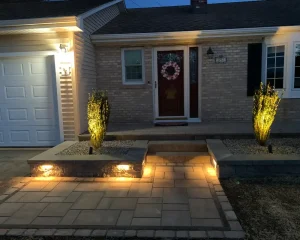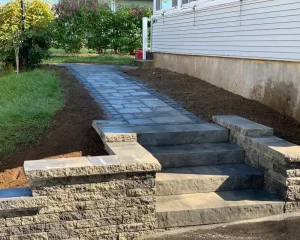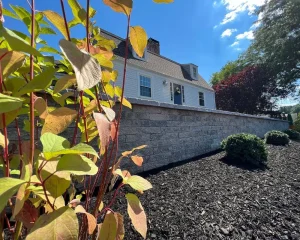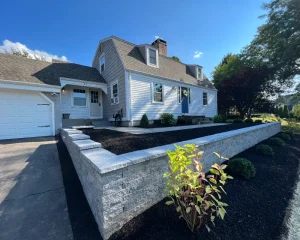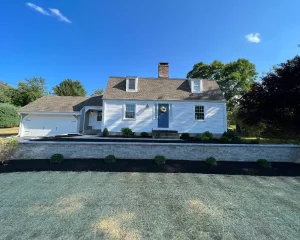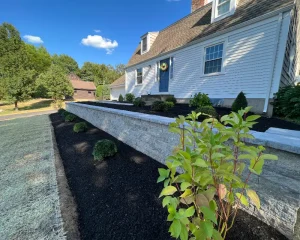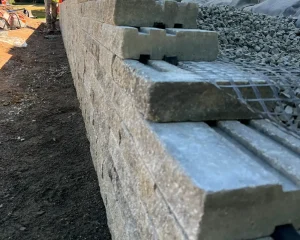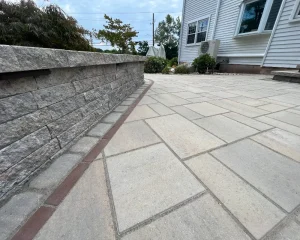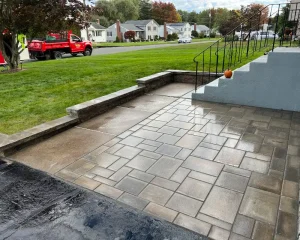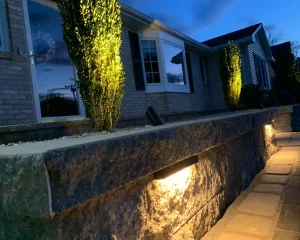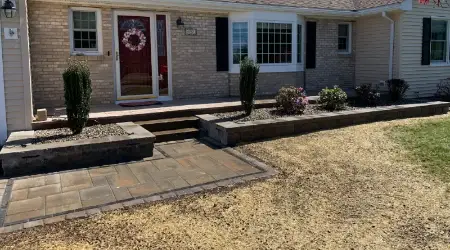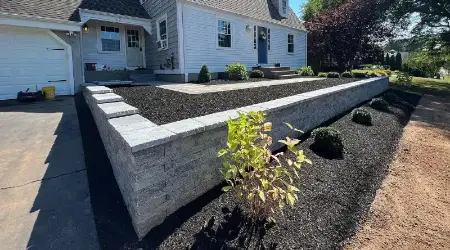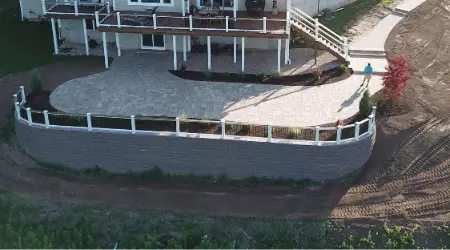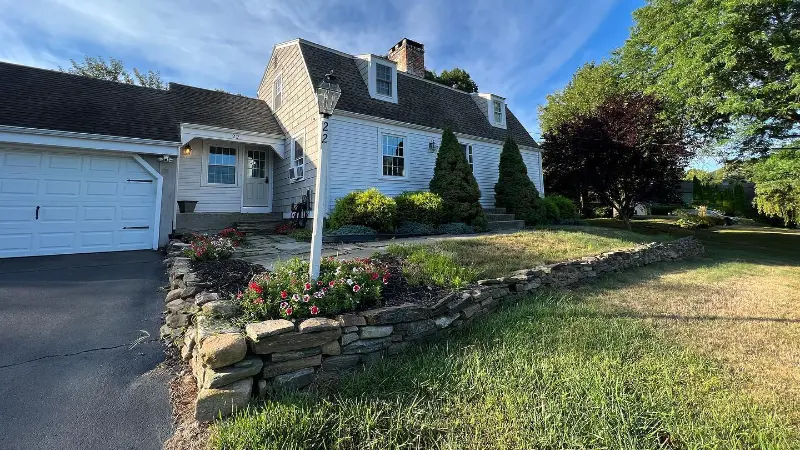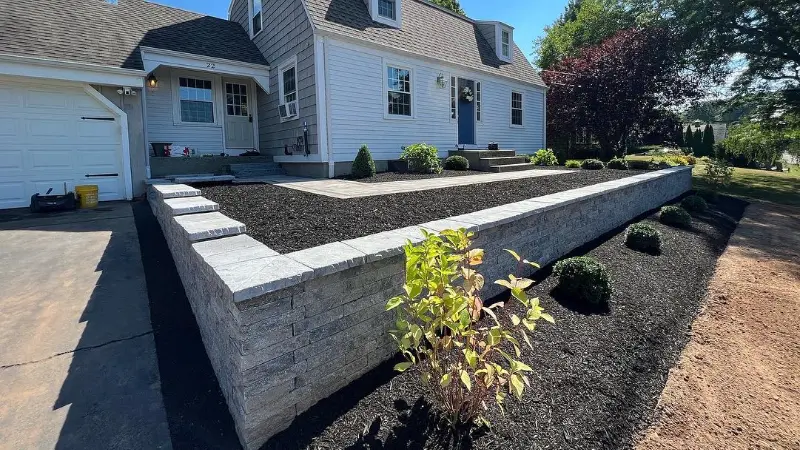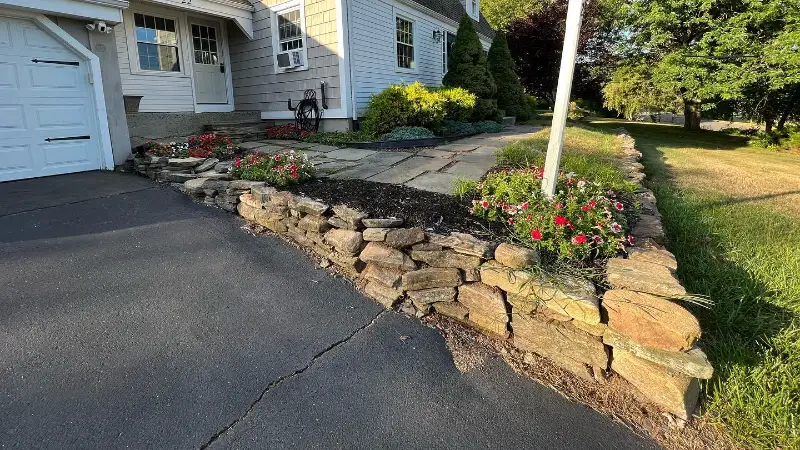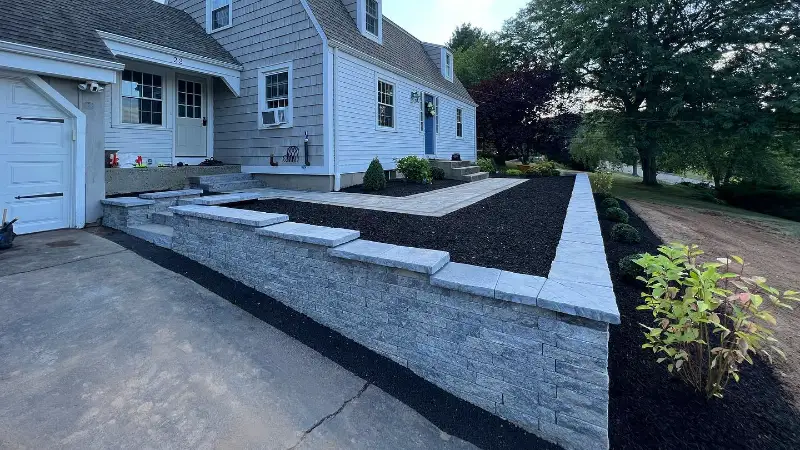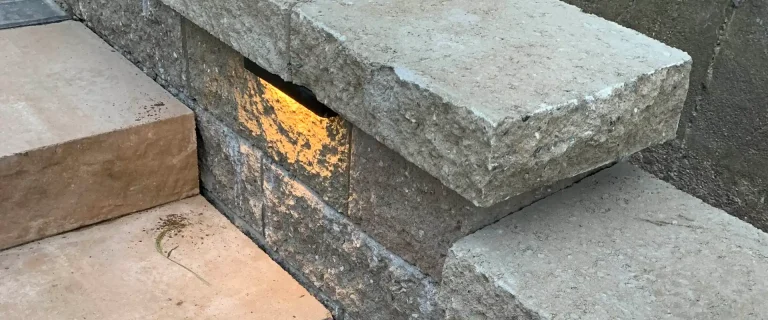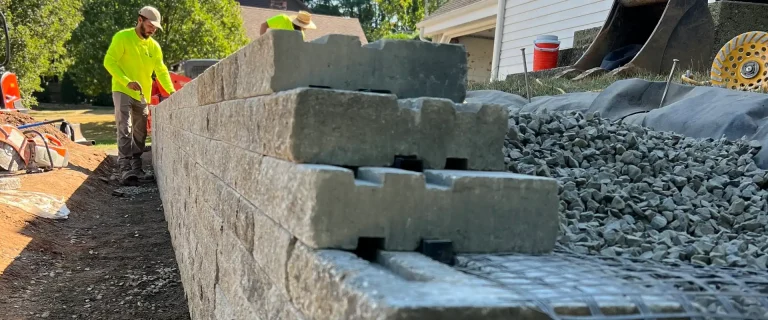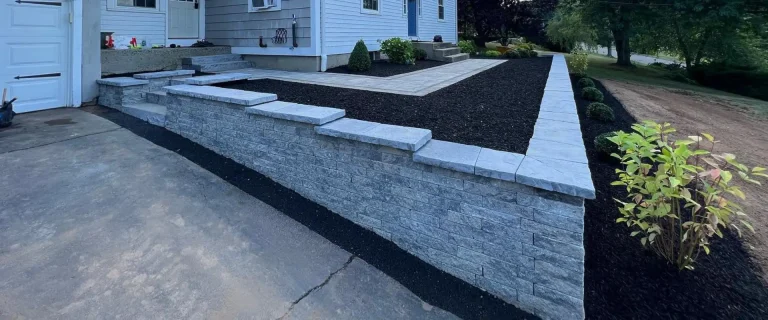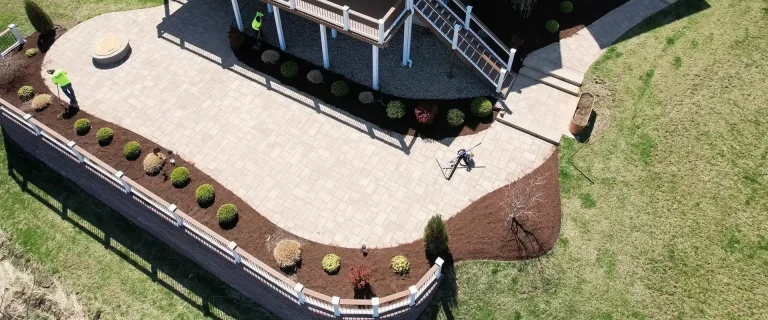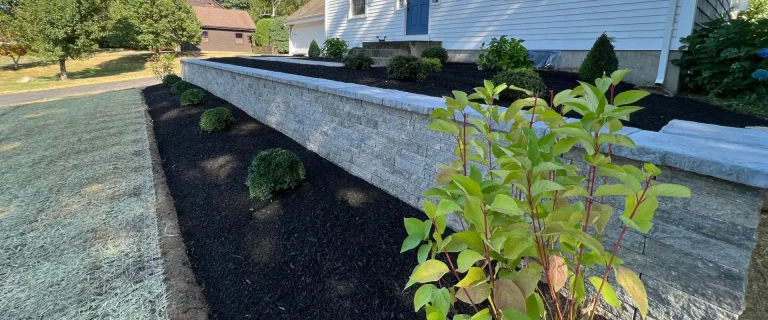Retaining Wall Repair Or Replacement
We specialize in rebuilding retaining walls that have failed and/or collapsed.
Retaining Wall Repairs
It's pretty common for us to get called out to repair an existing retaining wall that has collapsed or failed in some way. This could be an old wood retaining wall that is rotting away or a block wall that is bulging or on the verge of collapse if it has not collapsed already.
Typically we don't recommend "repairing" retaining walls. The wall has failed for a reason and that reason is typically poor construction or a poor choice of materials. When a wall has failed we will usually recommend tearing the wall out and replacing it. This would include demolition of the old wall, re-excavating the area to allow for proper base materials, installation of proper drainage, and proper backfill. Building it right is the more cost effective option in most situations.
Rebuilding Failed Retaining Walls
If your existing retaining wall has failed and needs to be replaced it's usually more cost effective to demolish the old wall, remove the materials, re-excavate the site, install a proper base, geo-grid if necessary, install drainage, and build the retaining wall properly.
We specialize in rebuilding retaining walls that have failed and would be happy to provide you with a consultation if you have a wall that you believe needs to be replaced.
Our Clients Love Us!
Here's What They Say
Scenic landscaping has been handling all my garden , lawn , fall cleanup , retaining wall work , and all my snow removal including driveway,sidewalk,walkway to front door and patio. They have been working with me for two decades and I am always happy with the results of every project we have done also including many plantings and reseeding the yard. The staff and owners are always respectful and mindful of their work and clean up afterwards. I have faith that everything will always be done well and professionally and that is why I have not changed from using them for anything I need done. Also I am very particular about everything that is being done and they never disappoint. You will be very satisfied and very happy with the work that the team completes for you. Sincerely Paris
Dave was easy to work with, very professional, use high quality materials, dedicated to your project and show up on-time, work was scheduled exactly as planned, my patio came out stunning! Highly recommend using this company.
Dave, Enzo, and crew have worked at our property for several years now. Their work has a consistent high level of workmanship. From shrub trimming to care of beds, everything has been top notch. In the past year, they have installed two paver patios and a walkway. The work performed was of the highest quality and workmanship. Their communication, punctuality, and responsiveness are always tops. They are are very fairly priced as well. I would not hesitate to call Scenic for any job, large or small.
After receiving multiple quotes and meeting with several contractors, we decided to use Scenic to replace our patio and add a Cobblestone border with stone fill. They provided a timeline for the work and arrived promptly, cleaning-up each day, and communicating throughout the process. Our neighbors (many, since we are in a condo) commented about how meticulous and professional the team was. In fact, several members of the Board even wished to seek a bid to have them handle our landscaping! They couldn't believe how thorough the team was. I even noticed the team leafblowing the grass where they had driven their trucks in order for it to stand back up again and look untouched. We look forward to reaching out for future work and possibly sealing our patio in the spring.
Scenic Landscaping does excellent work! We love our new patio! We are also very happy with tree removal/ brush clean-up in the back of our yard. They are always professional and clean everything when they are done!
Scenic Landscaping transformed our backyard from an old broken patio to a beautiful work of art. From the planning stages to the completion of the project their attention to detail, timeliness and communication was great!
Recently had Scenic install a new patio and walkway for our home. We were very happy with the work, it looks great and the guys did a excellent job. We have also used them for snow removal and other landscaping projects. Would definitely use them again and we recommend them to all our family and friends.
Scenic came in and designed, planned, and installed a patio and retaining wall in my back yard. The price was right and the materials were great. Top quality work from a great group of guys. They were on time and completed the job early. cleaned up everything, topsoil, seed, and even put the bird feeders and planters back. Couldn't be happier with the job they did. I Definitely recommend them for your next project
Request Your Estimate
Are You An Existing Customer?
When we first worked together, we would have created a client hub account for you. You can have quick access to our convenient Client Hub to submit a new job request.
Our Client Hub Also Offers 24/7 Access To:
New To Scenic Landscaping & Property Maintenance?
Please fill out the form below so we can get the details on the landscaping projects you have in mind for us. If the form doesn't appear please click here.
More Retaining Wall Information
Enhancing Your Retaining Wall: Upgrades for Functionality and Aesthetics
Retaining walls are a fundamental aspect of landscaping, offering both functional support and aesthetic appeal to outdoor spaces. Whether you’re aiming to prevent soil erosion, create leveled gardening spaces, or enhance the…
Read More...Retaining Wall Failures: A Comprehensive Guide
Retaining walls are fundamental in transforming and stabilizing sloped terrains into functional landscapes. However, when these structures fail, they can pose significant risks and financial burdens. Understanding the causes, including the role…
Read More...Choosing Between Segmental Or Boulder Retaining Walls
When it comes to managing sloped landscapes and enhancing outdoor living spaces, retaining walls play a pivotal role. Among the most popular choices are segmental retaining walls and those constructed from natural…
Read More...Ideas for a Sloped Yard
If you live in a hilly town, sloped neighborhood, or rolling countryside, you know how intimidating it can feel when you are trying to landscape. Sloped yards can be difficult to walk…
Read More...Do I Need a Retaining Wall?
A retaining wall holds or retains soil behind it. While a retaining wall installation can seem like an enormous project, the process can actually be relatively pain-free when performed by experienced professionals. A…
Read More...5 Things Every Rocky Hill, CT Homeowner Should Know Before Building A Retaining Wall
5 Things Every Homeowner Should Know Before Building A Retaining Wall Retaining walls are a great way to add value and increase the curb appeal of your home. They can help you…
Read More...
 Retaining walls are a great addition to any landscape, especially if your property has an existing slope. Building a retaining wall allows you to reclaim some of that lost space by carving out usable outdoor spaces on sloping ground that would otherwise not be usable. Retaining walls can hold back earth and soil which helps to create new level areas for the construction of a
Retaining walls are a great addition to any landscape, especially if your property has an existing slope. Building a retaining wall allows you to reclaim some of that lost space by carving out usable outdoor spaces on sloping ground that would otherwise not be usable. Retaining walls can hold back earth and soil which helps to create new level areas for the construction of a 